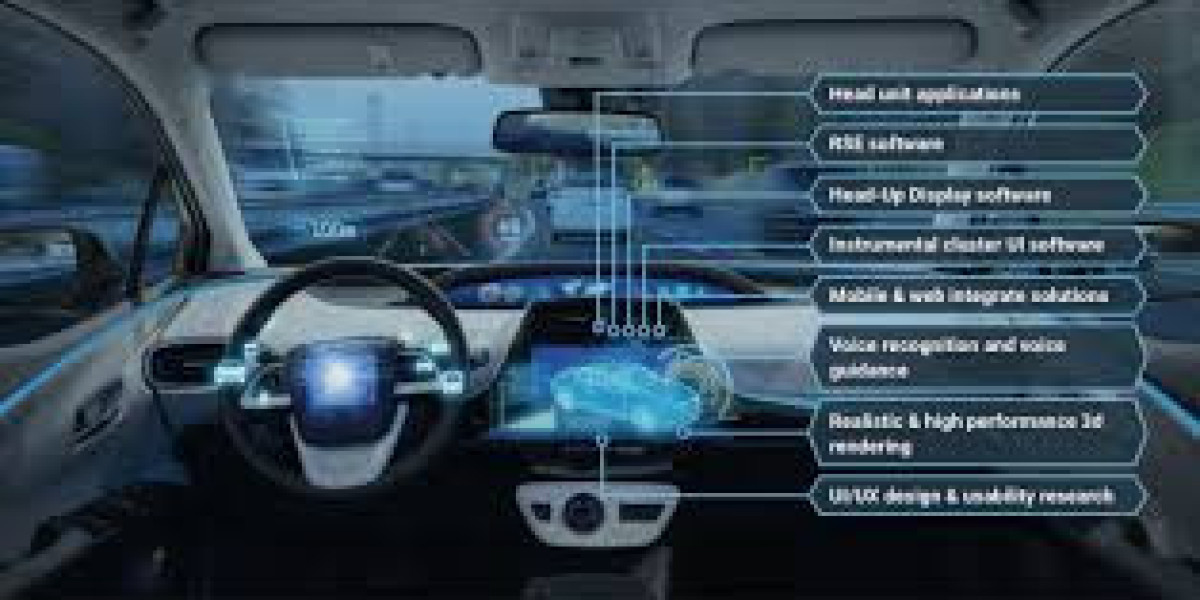Autonomous driving has moved from a distant dream to a rapidly evolving reality. What was once confined to sci-fi movies is now being tested on our roads by global automotive giants and innovative startups alike. At the heart of this revolution lies a powerful force—automotive software development.
From enabling self-driving algorithms to integrating advanced driver-assistance systems (ADAS), an automotive software development company plays a critical role in shaping how vehicles of the future will navigate, react, and interact with their surroundings.
In this blog, we’ll explore the future of autonomous driving, the technology making it possible, and the crucial role that an automotive software development company plays in bringing it to life.
The Rise of Autonomous Driving
Autonomous driving refers to vehicles capable of sensing their environment and operating without human intervention. The industry defines autonomy in six levels, from Level 0 (no automation) to Level 5 (full automation).
Level 0: No automation — the driver controls everything.
Level 1: Driver assistance — cruise control, lane-keeping assistance.
Level 2: Partial automation — steering and acceleration/deceleration are automated under certain conditions.
Level 3: Conditional automation — the vehicle can handle most driving tasks, but human intervention may still be needed.
Level 4: High automation — the vehicle can handle all driving in specific conditions without human input.
Level 5: Full automation — no steering wheel or pedals; the car drives itself in all environments.
We are currently hovering between Levels 2 and 3, with several companies aiming to reach Level 4 and beyond in the coming decade.
The Technology Powering Autonomous Vehicles
Autonomous driving isn’t just about putting a computer inside a car—it’s a blend of multiple high-tech systems working together:
1. Artificial Intelligence & Machine Learning
AI enables vehicles to process data in real-time and make decisions like a human driver—only faster. Machine learning models help improve navigation, obstacle detection, and prediction of road conditions.
2. Sensor Technology
Autonomous vehicles rely on LiDAR, radar, cameras, and ultrasonic sensors to "see" their environment. These sensors create a 360-degree view that informs decision-making.
3. High-Definition Mapping
Self-driving cars use precise maps that are constantly updated to navigate effectively.
4. Vehicle-to-Everything (V2X) Communication
This technology allows vehicles to communicate with other cars, infrastructure, and even pedestrians to improve safety.
5. Cloud Computing
Cloud-based platforms store and process the massive data collected by autonomous vehicles, ensuring AI algorithms have the information they need to function properly.
Why the Role of an Automotive Software Development Company is Crucial
An automotive software development company acts as the bridge between advanced technology and the automobile industry. Here’s how they contribute to the autonomous driving revolution:
1. Developing Intelligent Control Systems
They design and program the brains of autonomous vehicles—control systems that can process environmental data, make driving decisions, and react instantly to changing road conditions.
2. Integrating AI and Machine Learning Models
By building advanced AI algorithms, these companies make it possible for cars to learn from real-world driving data and continuously improve their performance.
3. Ensuring Safety and Compliance
Safety is the most critical factor in autonomous driving. Software developers ensure compliance with global automotive safety standards such as ISO 26262.
4. Customizing Features for Automakers
Each automaker has different needs. An automotive software development company can create custom solutions such as unique ADAS features, brand-specific infotainment systems, and predictive maintenance tools.
5. Cybersecurity for Connected Vehicles
Autonomous vehicles are essentially computers on wheels, which makes them vulnerable to cyberattacks. Development companies implement advanced encryption, intrusion detection, and secure communication protocols.
Challenges in Autonomous Driving
While the future looks promising, several challenges must be addressed:
Regulatory hurdles: Laws around self-driving cars differ across countries and states.
Public trust: Many people are still hesitant to let AI take control of their vehicles.
Ethical dilemmas: Decision-making in unavoidable accident scenarios raises moral questions.
Infrastructure readiness: Roads, traffic signals, and connectivity systems need upgrades to support autonomous driving.
Data security: The amount of personal and vehicle data collected must be protected from breaches.
How an Automotive Software Development Company Addresses These Challenges
The expertise of an automotive software development company can help overcome these hurdles:
Compliance-First Development: Adhering to industry standards and ensuring software meets regional regulations.
Testing and Simulation: Running millions of simulated driving scenarios before deployment.
Human-Centric Design: Building user-friendly interfaces that increase trust in autonomous systems.
Collaborating with Governments: Partnering with authorities to align technology with infrastructure upgrades.
Cybersecurity Expertise: Proactively preventing vulnerabilities before they become threats.
The Future of Autonomous Driving – What’s Next?
The next decade will witness massive transformations in the automotive industry:
Mainstream Level 4 Autonomy
Fully autonomous taxis and delivery vehicles will become common in urban areas.Personalized In-Vehicle Experiences
With no need to drive, passengers can enjoy customized entertainment, productivity tools, and relaxation options.AI-Driven Fleet Management
Self-driving trucks and logistics fleets will optimize routes, reduce fuel consumption, and improve delivery times.Increased Safety and Accident Reduction
With AI making split-second decisions, accident rates could drop significantly.Global Collaboration
Automakers, tech companies, and governments will work together to standardize autonomous driving technology.
How Businesses Can Prepare for the Autonomous Future
If you’re an automaker, parts supplier, or tech startup, preparing for autonomous driving involves:
Partnering with the right automotive software development company
Investing in R&D for AI-powered solutions
Exploring new revenue streams like mobility-as-a-service
Building strong cybersecurity frameworks
Conclusion
Autonomous driving is no longer a futuristic concept—it’s the next chapter in automotive innovation. From AI-powered decision-making to real-time environmental awareness, the technology behind self-driving cars is transforming how we think about transportation.
At the core of this transformation is the automotive software development company, bridging the gap between cutting-edge technology and real-world vehicle performance. These companies are shaping the future of mobility, ensuring safety, efficiency, and user trust.
If you’re looking to embrace this future and turn your vision into a road-ready reality, Appingine stands ready to be your technology partner. With our expertise in advanced automotive software development, we can help you lead the autonomous driving revolution—safely, efficiently, and innovatively.



